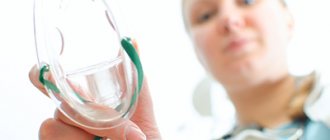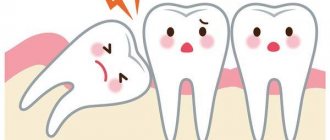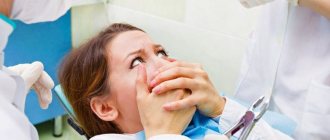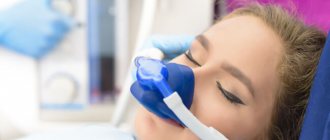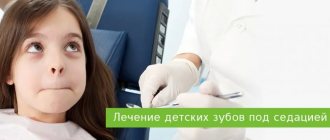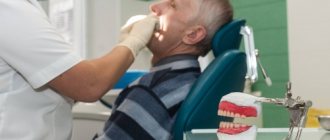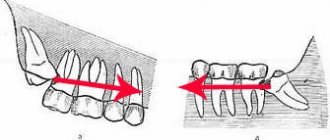If you, like 98% of the world's population, are afraid of visits to the dentist, then tooth extraction under anesthesia is an easy way to carry out the procedure. I fell asleep, woke up - there was no tooth. But is everything so simple, and most importantly, safe?
There are different degrees of drug-induced mind control:
- Light
(sometimes called superficial). The patient is aware of what is happening, makes contact, and follows instructions. Only coordination and reaction slow down, and the patient himself experiences a feeling of relaxation. - Average
. The inhibition of the nervous system is deeper, but consciousness and reflexes are preserved, the patient reacts to specific stimuli. - Deep
. The depression of the central nervous system functions increases, the patient reacts only to strong stimuli. In this case, protective reflexes are preserved, but breathing monitoring is required. - General anesthesia
. Complete loss of consciousness, no reaction to stimuli, breathing support is needed, monitoring of all body functions. At this stage, reflexes do not work, pain receptors are turned off.
The first 3 conditions are sedation
.
The fourth stage is anesthesia
.
What types of pain relief are used during tooth extraction?
A classic example of an archaic tooth extraction without any anesthesia is an episode from Chekhov’s story “Surgery.” In modern dentistry, such outright torture does not happen, and tooth extraction without anesthesia is not carried out under any circumstances. If it is necessary to remove 1 - 2 teeth in one visit, the operation is carried out mainly under local anesthesia. However, there are indications for tooth extraction under general anesthesia.
In medicine, the term “general anesthesia” means a state of inhibition of the central nervous system with a temporary immersion of the patient into sleep of varying degrees of depth and loss of pain sensitivity. This reaction of the body is artificially induced using safe anesthetic medications, and it lasts from 30 minutes to 3 hours, depending on the required volume of surgical intervention. For example, removing 4 wisdom teeth under general anesthesia will require a significant amount of time.
Disadvantages of general anesthesia (full general anesthesia)
- There may be a possible presence of individual sensitivity to drugs with the effect of reduced or increased sensitivity or long-term aftereffects from anesthesia with deterioration of health (drowsiness, confusion, dizziness, vomiting);
- The need to carry out additional preparatory measures in the form of a general examination , obtaining an ECG 5 hours before the anesthesia procedure is to be performed, avoiding eating three hours before visiting the dentist, and should not consume alcoholic beverages.
- The high speed of work of a dentist in the oral cavity and the associated increased radicalism during manipulations. The doctor’s work time is limited; it is necessary to do all the planned manipulations in the oral cavity; there is not always time for a painstaking search for canals in the roots of the teeth or treatment of teeth in the stage of moderate caries.
- Death of a patient as a result of unexpected general reactions to the administered drug
- To avoid complications of the patient, before performing dental treatment using general anesthesia, it is advisable to examine it in as much detail as possible, especially if you plan to give anesthesia to a child. There is no doubt that these examinations, firstly, sharply reduce the number of patients for whom anesthesia is indicated. After all, if you approach the examination results strictly, many patients will have to be excluded. Secondly, this will lengthen the process of dental treatment; many examination results will have to wait several days from the laboratory. And thirdly, this will further increase the price of the total cost of treatment, which is already quite considerable.
- Such a strict approach is primarily opposed by the patients themselves; few people want to undergo a lot of tests for several days at their own expense; people choose general anesthesia for the sake of speed, in order to cure all their teeth at once.
- However, if unforeseen complications arise, all doctors and patients turn into strict judges and ask with surprise why a detailed examination was not carried out. The truth is that miracles do not happen and any medical intervention has its risks.
- The high cost of general anesthesia is several times higher than the cost of local methods of pain relief due to the need for additional equipment in the clinic and the need to attract an additional anesthesiologist.
- An accompanying person is required to assist a patient after a dental appointment.
Tooth extraction under general anesthesia price, Samara, dental treatment under general anesthesia. Prices for dental treatment under general anesthesia in Samara - price of wisdom teeth removed under general anesthesia where, is it possible to remove teeth under general anesthesia
Immersion of the patient in a state of sleep for 60 minutes allows the following types of work to be performed
- removal of 4-10 teeth (the number depends on the complexity of the procedure);
- removal of 2-4 teeth, characterized by difficult eruption (impacted teeth);
- treatment of 3-5 teeth at the stage of pulpitis (the number is determined by the condition of the roots and canals of the teeth);
- treatment of carious formations up to 5-8;
- installation of dental implants in the required quantity with osteoplasty and sinus lift;
- treatment of periodontitis for up to 3 teeth, depending on the complexity and curvature of the tooth canals.
Teeth under #general anesthesia Samara, wisdom teeth under general anesthesia, #teeth extraction under general anesthesia reviews prices, where to remove teeth under general anesthesia.
Two types of general anesthesia
- Intravenous - injection anesthesia
Today's preference for this option is given by the maximum number of doctors. Special medications that are administered over a specific period of time (the dose is determined by the anesthesiologist).
This method requires appropriate knowledge and experience and can only be performed by a specialist anesthesiologist.
Among the most commonly used drugs are Gekennal, Sombrevin, Calipsool. The patient's condition during the treatment procedure is monitored by an anesthesiologist.
- Inhalation anesthesia
For this type of anesthesia, a special mask is used, through which an anesthetic composition is supplied in a gaseous state - a mixture of gas and oxygen, which enters directly into the respiratory tract, quickly being absorbed into the blood. Nitric oxide, fluorotane, is used as the main anesthetic drug.
Also, during inhalation anesthesia, an intubation tube is used to deliver a general anesthetic.
It is difficult to act as an independent expert in a field of medicine in which you do not practice regularly. However, long experience in surgical dentistry has made it possible to use immersion of patients into medicinal sleep at the reception. At one time, the appointment was carried out at a hospital with the assistance of an anesthesiologist, so it was possible to observe in practice all the features of general anesthesia in dentistry.
First of all, it is necessary to distinguish between premedication drugs and anesthetic drugs. If the first ones can be purchased using a simple recipe. the latter are difficult to acquire, and most importantly, it is difficult to account for their use. The medical institution has many problems with taking them into account; many have seen reports in the press about criminal cases filed against dentists or veterinarians. What should a poor operational worker do if, when checking, he sees that according to the magazine there should be three ampoules of the drug in stock, but there are only two available. In fact, one ampoule went somewhere else, and this is a criminal offense.
Therefore, dentists often use a complex drug mixture for premedication instead of a single drug for general anesthesia. These combinations are officially prescribed in textbooks, they may well be an alternative to general anesthesia, they give almost the same effect. This form of premedication is an excellent solution for a dental appointment, except for two disadvantages.
- Complex combinations of drugs are difficult to control and produce pronounced aftereffects. Most often, they have a strong inhibitory effect and can depress breathing and cardiac activity. Combinations may contain atropine, which is very undesirable.
- The presence in the pharmacopoeia of excellent drugs for raush anesthesia, recommended specifically for short-term outpatient interventions in dentistry, otorhinolaryngology, and gynecology.
An example is midazolam. The drug is little known in Samara, there is almost no experience with its use. Belongs to the group of benzodiazepines, close to tazepam, seduxen. Ultra-fast and ultra-short-acting drug. Provides an excellent level of general immersion with the removal of fear and pain; the patient experiences a superficial pink sleep, allowing the dentist to carry out any intervention slowly and with high quality.
But the main advantage of this drug is that the sleep itself is very superficial, contact with the patient is maintained, the person answers questions, can control his condition and gives signals when it changes, but still sleeps. After completing the treatment, the doctor simply says, “The treatment is over, let’s get up,” and the patient wakes up with a smile. A cup of coffee finally drives away the aftereffect of the drug.
The drug midazolam can be used in tablets and solution; there is no need for intravenous injection. In tablets, the effect occurs within the usual 20 minutes. The uniqueness of the drug is that it can be used intranasally in solution, then the total dose is significantly reduced, and the onset of sleep is sharply accelerated.
But, obviously, today this group of drugs is under very strict control. We do not use strictly controlled drugs, because we are not a hospital and do not have an anesthesiologist on staff.
However, we have a solution for patients with increased fear of visiting the dentist. Oddly enough, you can buy the most powerful sedative drug Novopassit over the counter in a pharmacy. Like any product of the Western pharmaceutical world, it is very widely advertised, freely sold in pharmacies and positioned as a herbal, harmless sedative for daily use. You can take it while driving and give it to children. May be. But it contains the anxiolytic guaifenesin, a very tricky drug. Even 5 years ago, in the instructions for Novopassit (solution) it was clearly called an anxiolytic, and today it is positioned as an expectorant, one of the effects of which is a sedative effect. Thus, it was carefully removed from the list of psychotropic substances and transferred to an expectorant. The calming effect of Novopassit is very strong and is clearly associated not with hop cones and valerian, but with 200 milligrams of guaifenesin in each tablet. By the way, this is a very large dosage for psychotropic substances.
Two such different screenshots.
When taking 2 tablets of Novopassit (as recommended in the instructions) before an appointment with a doctor, the patient receives such a portion of soothing, highly active substances that he laughs merrily in the chair, wondering what funny instruments these dentists have. With a broad gesture, the manufacturer allows you to take 2 tablets 3 times a day, so you can take 2 tablets in advance in the morning so that you are not afraid for sure. The effect of all drugs is very dose dependent.
Good old Corvalol. Many people perceive it as a harmless sedative with a weak effect or as a heart drug for pensioners. In fact, it is a powerful combined sedative that behaves very differently depending on the dose. When taking 10 drops, vasodilating and expectorant properties appear due to the volatility of the valerian and alcohol esters included in its composition. But already after taking 50 drops (recommended in the instructions), the effect of phenobarbital appears, and this is a very strong basic benzodiazepine with a strong sedative effect. The alcohol and valerian ester contained in Corvalol significantly potentiate the effect of the drug. Without violating the instructions, if prescribed by a doctor, you can take 50 drops an hour before your appointment with the dentist and another 50 drops in the dentist’s office; the effect will be quite sufficient to remove the fear of dental treatment. You are strictly forbidden to drive a car; it is advisable to be accompanied by an accompanying person at the reception.
But practice shows that people are not satisfied with simply getting rid of fear and pain. Many people say something like the following - I know that I won’t be hurt or scared at the appointment. I'm scared now when I imagine how scared I will be later. Therefore, I want to know that this “later” will not happen, that I will sleep during the appointment under anesthesia. But this is probably for psychotherapists. As a form of reassurance, I can say that when a patient sees a syringe or a mask for general anesthesia, he immediately remembers all the complications and all the risks, in his eyes there is a frantic horror in front of the darkness of sleep and he is fully aware of the artificiality of his fear of the drill.
Wisdom tooth removal under general anesthesia, wisdom tooth removal under general anesthesia Samara, dental treatment reviews, where teeth are treated under general anesthesia.
Dental treatment.
Are teeth removed under general anesthesia in Samara, can a tooth be treated under general anesthesia, general anesthesia when treating a tooth
Advantages of tooth extraction under general anesthesia
- Anesthesia slows down the body's reactions, due to which the pain is completely relieved. Therefore, all the dentist’s procedures for removing teeth will be completely painless for you.
- Many sensitive patients put off visiting a surgeon until dangerous complications develop simply because they are afraid of the mere sight of surgical instruments. If teeth are removed under general anesthesia, you will not see how the process will occur, but will only wake up when it is over.
- Even for a psychologically stable person, tooth extraction is a stressful situation that negatively affects the body. For example, patients often experience increased blood pressure during this procedure. However, if the operation is performed under general anesthesia, your nerves will not be damaged.
- While the anesthesia is in effect, the dentist will remove the necessary teeth and perform the necessary manipulations, which could take several visits. He will perform all actions carefully and efficiently, which will reduce the risk of complications.
Interesting fact!
According to data from various media sources, at least 2% of adults and 6 - 8% of children, for various reasons, do not have the opportunity to undergo routine tooth extraction using local anesthesia.
What could go wrong
The vast majority of complications are caused by doctor error. The incompetence of an anesthesiologist entails:
- Problems with the respiratory system
. Mucus and blood clots can get into the airways and block them, since during general anesthesia protective reflexes are suppressed. - Problems with the cardiovascular system
. The wrong dosage causes different reactions: a slowdown or acceleration of the heart rate, a drop or increase in blood pressure.
Recovery from anesthesia may be accompanied by nausea, vomiting, and inappropriate behavior. General anesthesia is a serious shock to the body; it should not be considered harmless.
There are fewer risks with sedation
, but they exist too. These are all the same breathing disorders and hemodynamic processes (problems with blood pressure and heart rate).
Types of anesthesia for tooth extraction and methods of its behavior
Based on the depth of anesthesia, anesthesia is divided into the following types:
- surface;
- easy;
- full;
- super deep.
For dental treatment under anesthesia, only superficial and light anesthesia is used in dentistry. While the last two types are used for complex operations, for example, for maxillofacial injuries.
Anesthesia is carried out in two main ways:
- inhalation - you inhale sprayed particles of the drug through a special mask;
- intravenously - using a regular injection.
High-quality anesthetic drugs promote restful drug-induced sleep and recovery from it without any complications. Modern anesthetic medications are highly safe and suitable even for patients with allergies. They do not cause side effects or addiction and are easily eliminated from the body.
How to remove a tooth
There are two extraction methods used in dentistry: simple and complex. Their choice depends on which teeth are being removed - premolars and molars with tangled branched roots are removed using a complex method. It is very difficult to pull out such elements entirely due to the fact that the tooth socket is penetrated by retaining ligaments and alveolar processes. Errors during the procedure or insufficient experience of the specialist lead to serious complications. Therefore, even despite the acute condition, always find out in advance where you can have a tooth removed from a good doctor with positive recommendations.
Factors complicating the operation:
- complete destruction of the coronal part;
- high fragility;
- acute inflammatory diseases;
- Unerupted or misaligned wisdom teeth.
The technology of the procedure depends on which teeth are removed. In some cases, tissue incision and suturing are performed.
Indications and contraindications
The use of anesthesia in each specific case must have serious medical reasons, so it is used infrequently. In addition, the cost of tooth extraction under general anesthesia is quite high. If you are simply afraid of surgery, but you only need to remove one front tooth, then in this case it is advisable to use light sedatives and carry out tooth extraction under local anesthesia. If the surgeon’s task is much more complex and the volume of work is large, then general anesthesia is appropriate.
Indications
The following main indications exist for the use of general anesthesia during tooth extraction:
- allergy to local anesthetics;
- panic fear of treatment;
- increased blood pressure (hypertension) due to stress;
- a gag reflex in the patient, which prevents the doctor from performing the operation;
- large volume of manipulations;
- inability of a patient with disabilities to sit in the dental chair.
Contraindications
Speaking about contraindications to tooth extraction under general anesthesia, you should be guided by the list of factors presented below that may cause refusal of this procedure:
- exacerbation of chronic pathologies;
- diabetes mellitus in the stage of decompensation;
- acute heart failure;
- period up to six months after myocardial infarction;
- heart defects;
- infectious diseases;
- anemia;
- epilepsy;
- pathologies of the respiratory system.
Root removal
How is the root of a tooth removed if the tooth is completely destroyed? Despite this situation, extraction is not always recommended. If, after diagnosis, the doctor determines that the root can be used for an inlay, then the tooth is restored with a crown. But if there is pain, an unpleasant smell and taste, or swelling has developed, then dental care is required urgently. In this case, the question of whether to remove the roots of the teeth is decided in favor of the operation, since the neglected condition can also lead to the loss of neighboring elements.
Regardless of the chosen technique, pain relief and X-ray control are required after removal. This allows you to make sure that there are no root fragments in the cavity, since it is often loose and can crumble under slight pressure from the forceps.
When is tooth extraction required under anesthesia?
Complex tooth root removal
The lateral (chewing) teeth have a complex root system. Sometimes it takes quite a long time to extract them. Removing a tooth root under anesthesia allows the surgeon to carry out a large amount of work during one patient visit.
Removal of impacted wisdom tooth
One of the most difficult operations is the removal of a wisdom tooth under general anesthesia. The roots of “eights” are often irregular, intertwined with each other, and go under the adjacent tooth. Resection of unerupted (impacted) wisdom teeth is especially difficult. They have to be removed for a long time and carefully through incisions in the gums. That is why 8 teeth are removed under general anesthesia.
Removal of several molars
When it is necessary to remove several molars during one visit to the dentist, it is also advisable to use general anesthesia. Often, the doctor performs additional manipulations of gum plastic surgery with bone grafting if subsequent installation of implants is planned.
Maxillofacial surgeon - Ph.D. Serpukhovitin Vladislav Sergeevich
Chief dental surgeon, doctor of the highest category. One of the most famous maxillofacial surgeons in Moscow. He is a full member of the Society of Oral and Maxillofacial Surgeons.
To remove the most complex teeth, an ultrasonic device (piezo scalpel) is used, which destroys tooth tissue without affecting the gums and bone. Vladislav Sergeevich can easily remove even the tooth that is located next to the nerve.
Installed more than 20,000 implants. Proficient in all the latest implantation techniques with various systems, as well as various methods of bone tissue augmentation, including the use of membranes, bone blocks and sinus lifting
Stages of tooth extraction under general anesthesia
Preparation
Questions about the choice of anesthetic and the method of its administration are resolved individually for each patient. To do this, the anesthesiologist will collect an anamnesis, inquire about the patient’s chronic diseases and refer him to diagnostic procedures (usually a blood test and an ECG). It is also necessary to consult with a neurologist, therapist and otolaryngologist in order to identify contraindications to the use of general anesthesia.
Operation
Literally one minute after the administration of the anesthetic by inhalation or intravenous route, the patient feels drowsy and gradually falls asleep. Within five minutes, his breathing stabilizes and his muscles relax. During a tooth extraction operation under general anesthesia, a qualified anesthesiologist is constantly with the patient, monitoring his vital signs: pulse, blood pressure, body temperature, skin tone, blood circulation and ventilation.
Coming out of anesthesia
The doctor calculates the dose of the anesthetic so that its effect ends 10 - 20 minutes after completion of all manipulations. The patient gradually wakes up, and after 60 - 90 minutes his state of health is completely stabilized. After this, he can go home, but for this he will need an accompanying person. In addition, after tooth extraction under general anesthesia, you should never drive!
When preparing for tooth extraction under anesthesia, be sure to inform your doctor about all medications you are currently taking. Six hours before surgery you should stop eating and stop smoking. Stop drinking any drinks, including plain water, at least four hours before surgery.
Recovery after surgery
The rehabilitation period after tooth extraction during sleep is usually easy; a hospital stay is not required. It is enough to strictly follow the doctor’s recommendations, and within 2-3 days all unpleasant symptoms will disappear. And for those who want to speed up the process, we offer a complex of accelerated rehabilitation.
No hospitalization
Drug sedation is considered an absolutely safe method and is not accompanied by high health risks.
With general anesthesia, the postoperative “aftertaste” of general weakness remains for several days, which requires a hospital stay. When carrying out sedation, treatment is never accompanied by such postoperative “aftercare”. Patients call this state “I slept well and rested.” 30-40 minutes after treatment and checking the condition by an anesthesiologist, you can go home.
The operations are performed by experienced maxillofacial surgeons and the use of gentle protocols makes the procedure less traumatic, even when removing complex or all remaining teeth in the mouth. You will not need hospitalization, as they like to call it in city hospitals.
Accelerated rehabilitation
Despite the use of low-traumatic protocols for tooth extraction, this procedure is associated with inevitable trauma to the internal tissues of the oral cavity, to which each person’s body reacts differently. Possible pain and swelling. For patients who want to quickly get rid of postoperative inconveniences, we have developed a unique complex of accelerated rehabilitation.
Recommendations and medicines to take home
After the operation, you will receive a free package with all the necessary medications to reduce pain and prevent inflammatory processes. You don't have to run around pharmacies looking for the right medicine. You will also receive a brochure with recommendations for taking medications and basic rules of behavior during the rehabilitation period. Please do not violate the appointments and strictly follow the recommendations to avoid complications.
The postoperative package contains all the necessary medications - painkillers, antibacterials, antihistamines
Basic rules for the postoperative period:
- first meal - no earlier than 4 hours after surgery
- Do not drink alcohol or smoke for 24 hours
- on the day of surgery, avoid a hot bath, sauna or steam bath
- do not brush your teeth on the day of extraction, only oral baths are allowed
- do not touch the socket with your tongue or fingers for 2-3 weeks
- take medications and care for the socket according to the instructions
If you follow all the surgeon’s recommendations, then after 2-3 days the pain will stop bothering you and the swelling will begin to decrease. Complete healing of the gums occurs in about 2-3 weeks.
If you suspect any deviation from the normal process, please contact the 24-hour patient support number immediately - the number is provided in the advice brochure.
Possible complications
Some of the most common negative consequences of general anesthesia include the following:
- increased heart rate;
- tachycardia;
- convulsions;
- increased blood pressure;
- dysfunction of the respiratory system;
- vomiting reflex;
- laryngeal stenosis;
- bronchospasms;
- short-term memory problems.
It should be noted that such reactions occur only in a small number of patients; most feel well after surgery. In our clinics, general anesthesia is not used.
How is the sedation procedure performed?
The procedure consists of several stages. First, you need to get a consultation with a dentist - you meet the doctor and draw up a treatment plan.
For sedation, the patient will need to do a few simple tests:
- ECG.
- Donate blood for general analysis and biochemistry (detailed).
- Donate blood and get test results for hospitalization (for syphilis, HIV, hepatitis).
- If you have diseases, obtain permission from a specialized specialist.
The finished results are sent to the clinic administrators. Be sure to write the surname, initials of the patient and the dentist. The documents are submitted for review to the anesthesiologist, who decides on admission to the operation under sedation and takes into account the possible consequences.
The administrator contacts the patient to clarify the date and time of arrival at the center. On the appointed day, it is recommended to arrive early for the appointment, but do not use personal transport. If necessary, administrators will help you call a taxi to get you back home.
Before the procedure begins, there is a conversation with the anesthesiologist. In the operating room, an individually selected dose of anesthetic will be administered through a nasal catheter and wire. Unlike anesthesia, the patient continues to breathe on his own, plunging into a pleasant half-sleep, without negative sensations. At the end of treatment, the patient is escorted to the rest room, where he has the opportunity to lie down and rest.
Pros and cons of sedation in dentistry
The main advantage of treatment, removal or prosthetics of teeth under sedation is that it is much easier and more convenient for the doctor to work with a patient who is in a relaxed state. The patient does not experience negative emotions and a persistent feeling of fear from visiting the doctor’s office. In the future, people will more often visit the dental clinic for preventive purposes.
The procedure also has disadvantages, although there are not many of them. The patient should spend an additional hour in the rest room. The cost remains quite high, which is fully explained by the high price of imported materials, high-quality equipment, as well as the duration of treatment. Initially, you will need to spend time and money on tests and consultation with specialists.
Types of sedation: superficial and deep
The following sedative methods of relaxing and calming patients are used in dentistry:
- Superficial is the best solution in a situation where the patient requires relaxation for a short period of treatment. Indicated for adults, as well as children from the age of three. A state of pleasant slumber is achieved by inhaling oxygen mixed with nitrous oxide. The nasal mask through which the gas passes is connected to the machine. The doctor can change the ratio of components and dosage based on the individual characteristics of the patient.
- Deep - the medication is administered through an intravenous injection. This technique copes better with severe fear and anxiety. The technique is used for adults and children at least 15 years old. The relaxed state lasts longer than with a superficial state. The patient will need to stay in the clinic for some time and stop driving for 8 hours.
Anesthesiologists at the Refformat dental clinic in Moscow have been working with a wide variety of patients for a long time and their experience makes treatment safe. Any intervention, preparation and installation of prostheses will be comfortable and unnoticeable.
What is sedation in dentistry? How is it different from anesthesia or anesthesia?
Anesthesia in dentistry – anesthesia of the treatment area (site). This is a mandatory manipulation - a traditional injection into the gum near the diseased tooth.
Sedation is a light medical sleep that relieves anxiety and fear. The patient in this state is asleep, but conscious, feels touch, hears the doctor. The main difference from anesthesia is that during sedation a person breathes completely independently. Sedation is accompanied by local anesthesia so that it is not scary or painful. Sedation allows the doctor to monitor the condition of a patient with concomitant diseases - kidney or heart problems, high blood pressure - so all procedures are comfortable and as safe as possible.
Anesthesia or general anesthesia is used during hospital treatment when a complex operation needs to be performed. In this case, the patient’s consciousness is completely turned off, local anesthesia - injections into the gums - is no longer needed, and breathing is controlled by equipment.
The use of sedation assumes the preservation of standard reflexes and the absence of depression of the nervous system. According to reviews from patients of different ages, during treatment they feel lightness and relaxation. On average, an hour after the end of the procedure, the person returns to his normal state and can go home with an escort. Our clinic has a small room where you can rest and sleep after treatment under sedation.
